Pacing and predictors of performance during cross-country skiing races:A systematic review
homas Stöggl*,Barbara Pellegrini,Hans-Christer Holmberg
aDepartment of Sport and Exercise Science,University of Salzburg,Hallein/Rif 5400,Austria
bCeRiSM Research Centre “Sport,Mountain,and Health,” Rovereto 36068,Italy
cDepartment of Neuroscience,Biomedicine and Movement,University of Verona,Verona 37100,Italy
dSwedish Winter Sports Research Centre,Mid Sweden University,Östersund 83128,Sweden
eSchool of Sport Sciences,UiT Arctic University of Norway,Tromsø 9037,Norway
fSchool of Kinesiology,University of British Columbia,Vancouver,BC V6T 121,Canada
gDepartment of Physiology and Pharmacology,Karolinska Institutet,Stockholm 17177,Sweden
Abstract Background:Cross-country skiing(XCS)racing,a popular international winter sport,is complex and challenging from physical,technical,and tactical perspectives.Despite the vast amount of research focusing on this sport,no review has yet addressed the pacing strategies of elite XCS racers or the factors that in fluence their performance.The aim was to review the scientific literature in an attempt to determine the effects of pacing strategy on the performance of elite XCS racers.Methods:Four electronic databases were searched using relevant subject headings and keywords.Only original research articles published in peerreviewedjournals and the English language and addressing performance, biomechanics, physiology, and anthropometry of XCS racers were reviewed.Results:All 27 included articles applied correlative designs to study the effectiveness of different pacing strategies.None of the articles involved the use of an experimental design.Furthermore,potential changes in external conditions(e.g.,weather,ski properties)were not taken into consideration.A comparable number of studies focused on the skating or classical technique.In most cases,positive pacing was observed,with certain indications that higher-level athletes and those with more endurance and strength utilized a more even pacing strategy.The ability to achieve and maintain a long cycle length on all types of terrain was an important determinant of performance in all of the included studies,which was not the case for cycle rate.In general,uphill performance was closely related to overall race performance,with uphill performance being most closely correlated to the success of female skiers and performance on flat terrain being more important for male skiers.Moreover,pacing was coupled to the selection and distribution of technique during a race,with faster skiers employing more double poling and kick double poling,less diagonal stride,and more V2(double dance)than V1(single dance)skating across a race.Conclusion:We propose that skiers at all levels can improve their performance with more specific training in techniques(i.e.,maintaining long cycles without compromising cycle rate and selecting appropriate techniques)in combination with training for endurance and more strength.Furthermore,we would advise less experienced skiers and/or those with lower levels of performance to apply a more even pacing strategy rather than a positive one(i.e.,starting the race too fast).
Keywords:Classic style;Competition;Cycle characteristics;Positive pacing;Skating


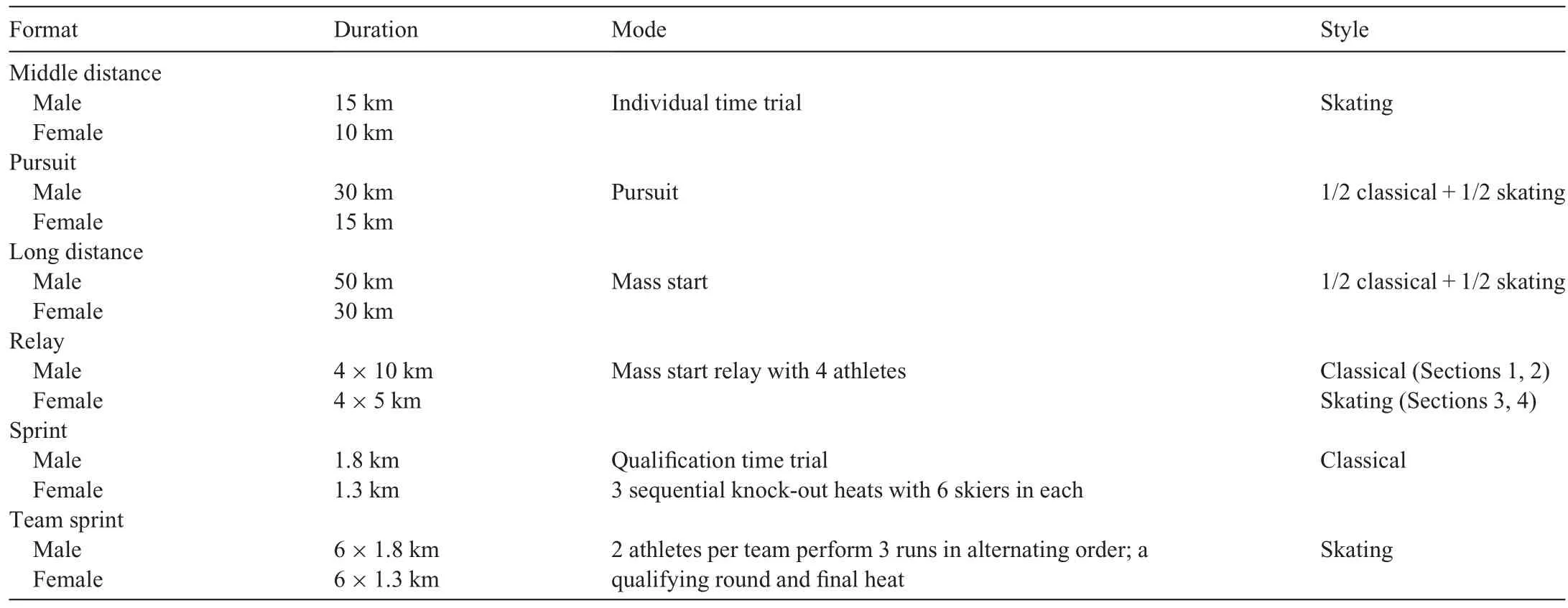
Table 1 Race formats,applied skiing technique and distances for males and females at the 2018 Winter Olympics in Pyeongchang.
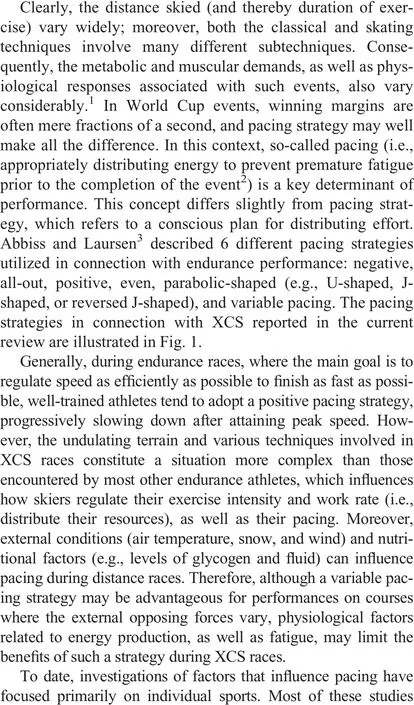
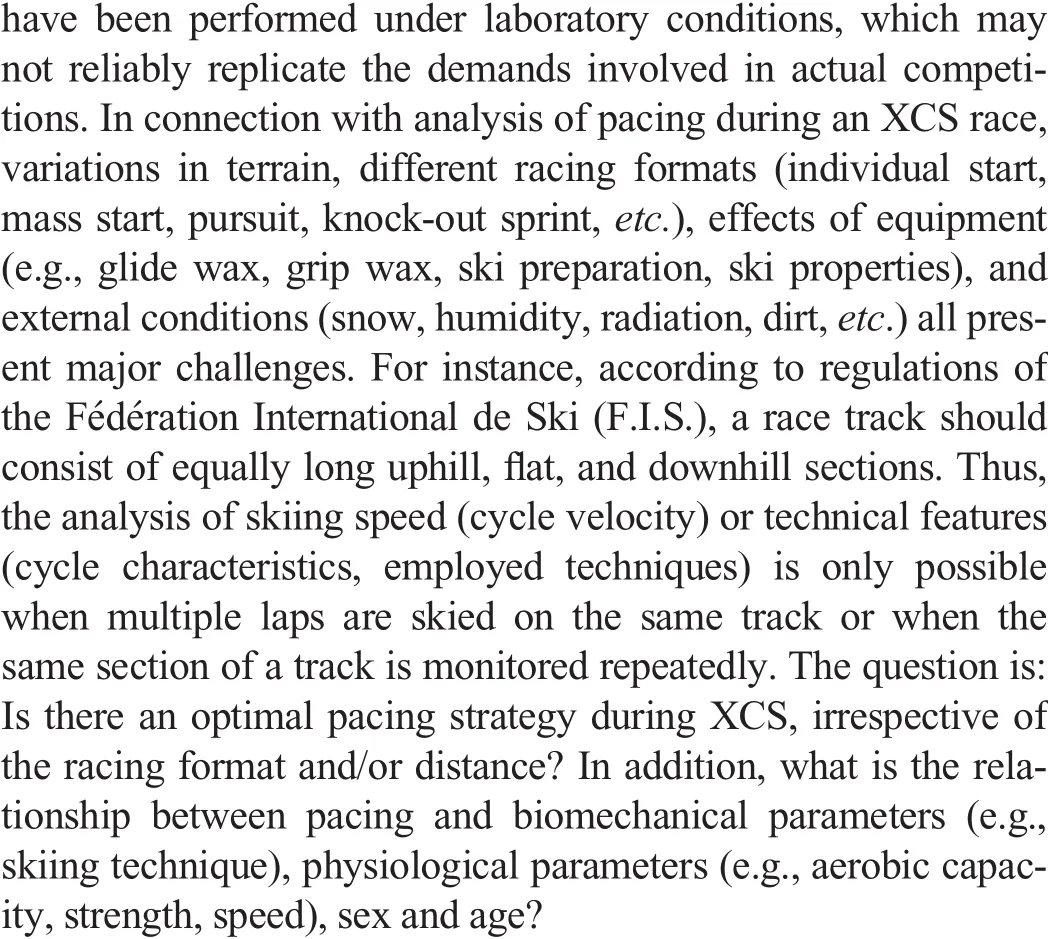
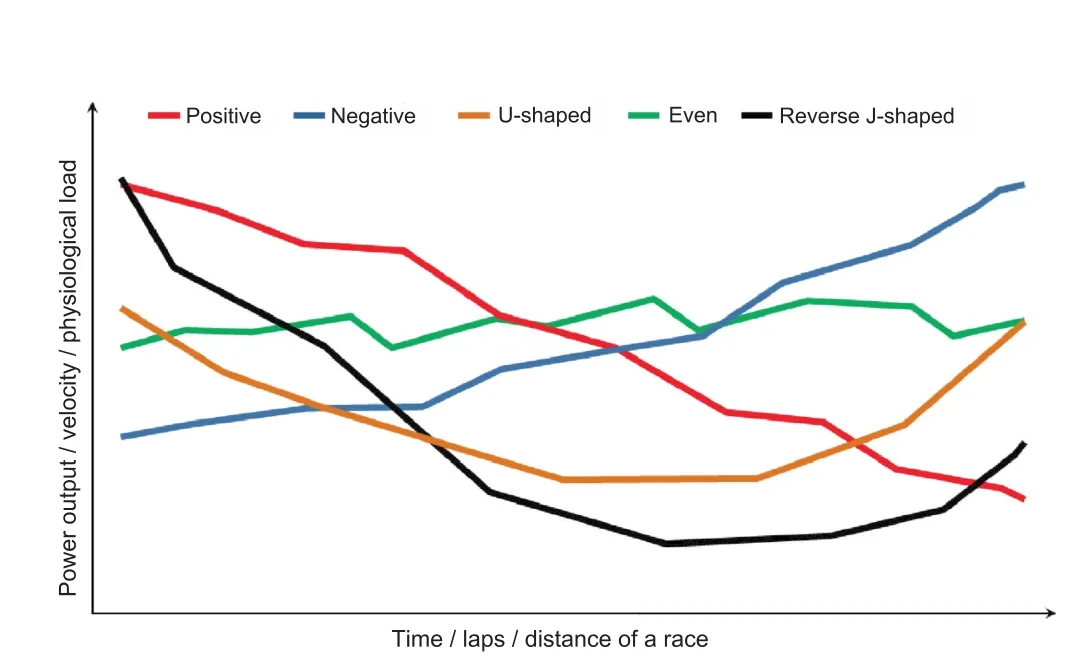
Fig.1.Schematic illustration of reported pacing strategies applied during cross-country skiing research
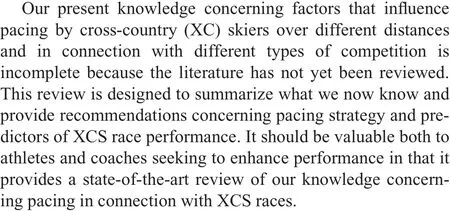
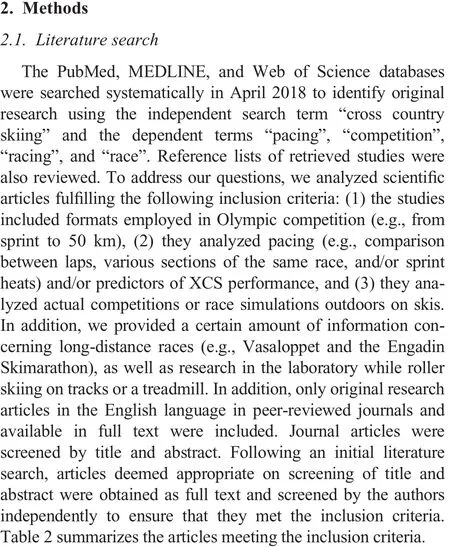



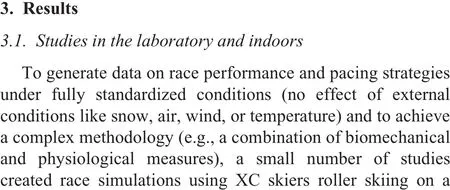

Table 2 Summ ary of studies related to pacing and predictors of race perform ance in XCS.

Table 2(Continued)
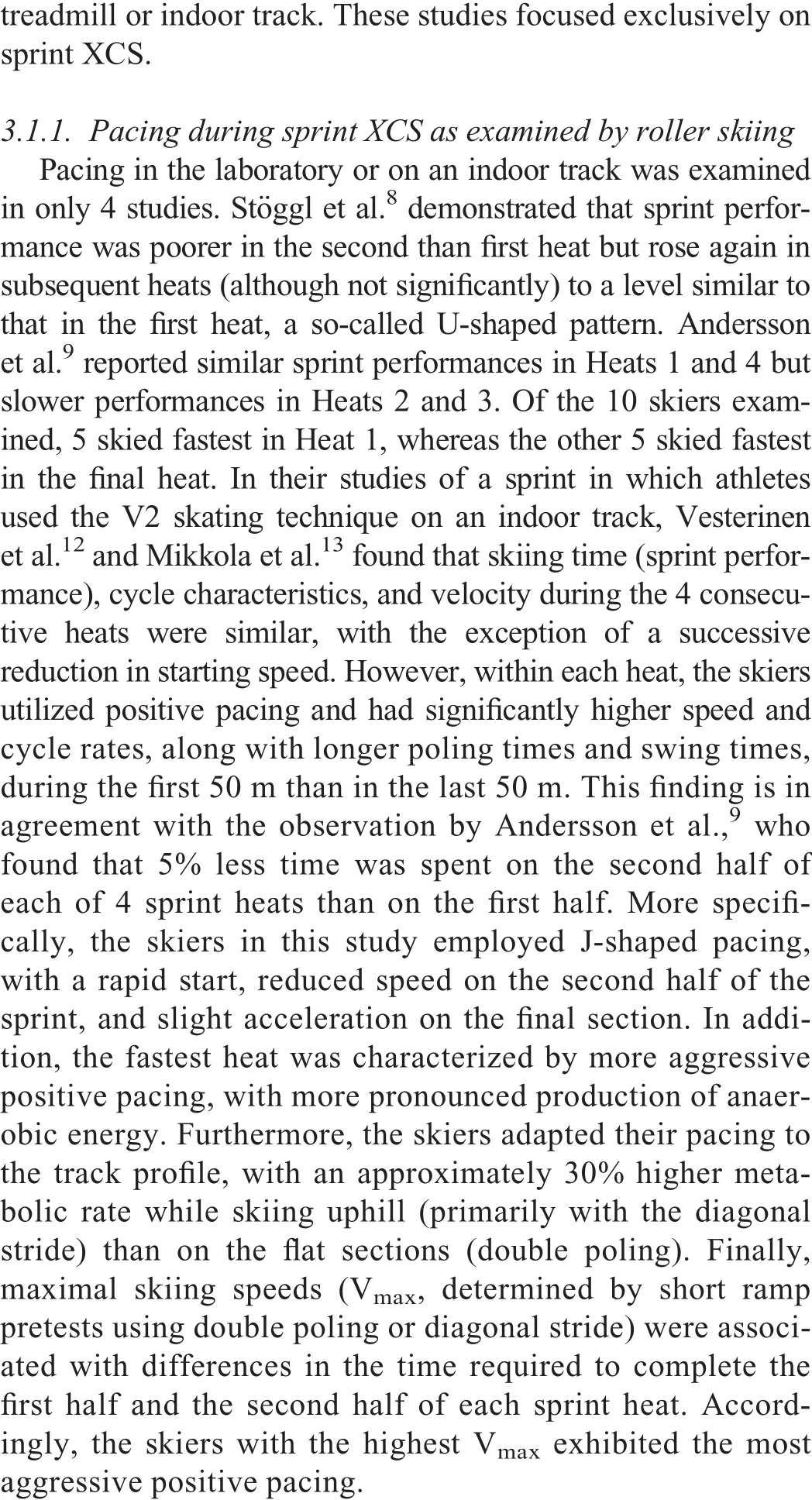
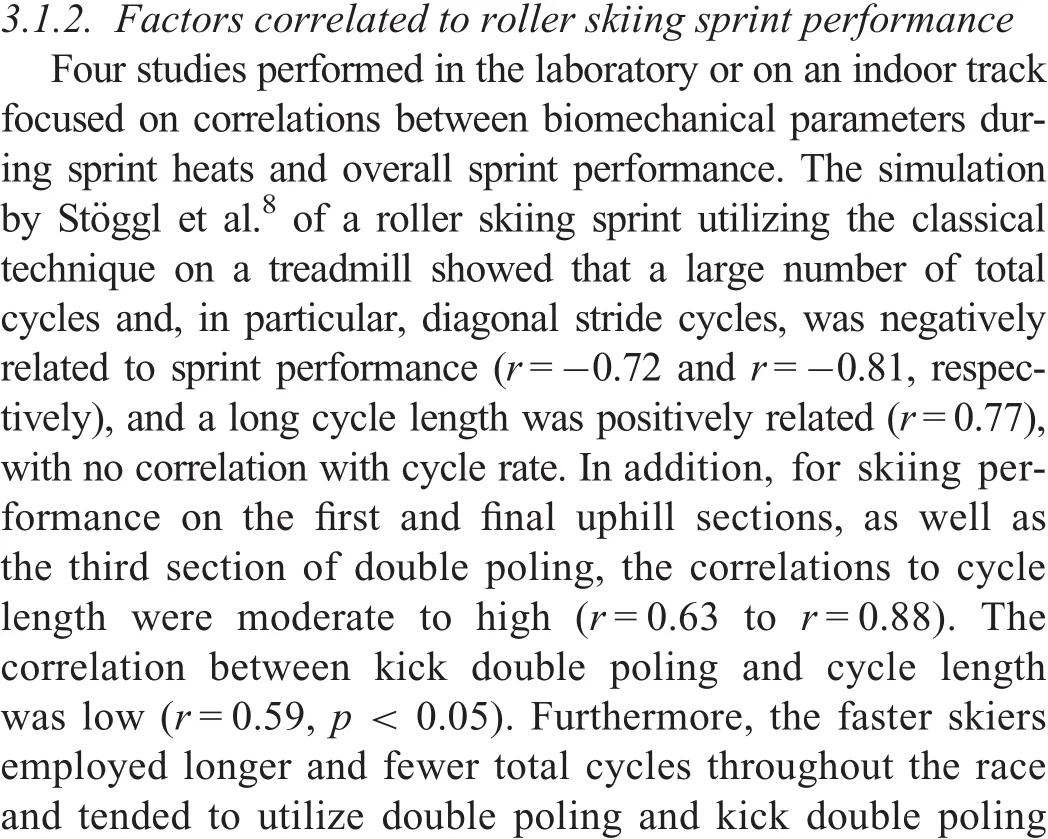

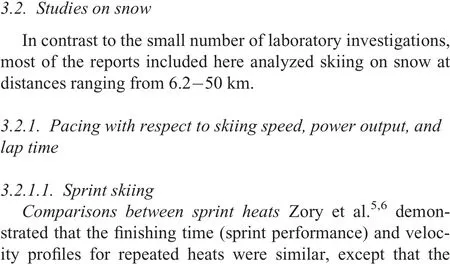
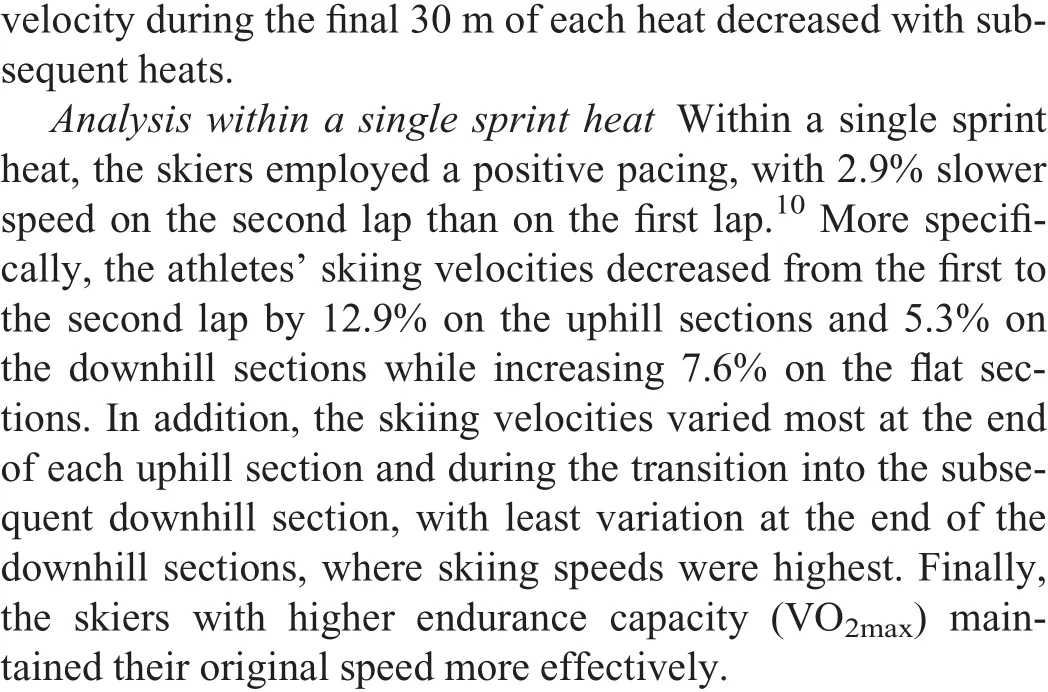
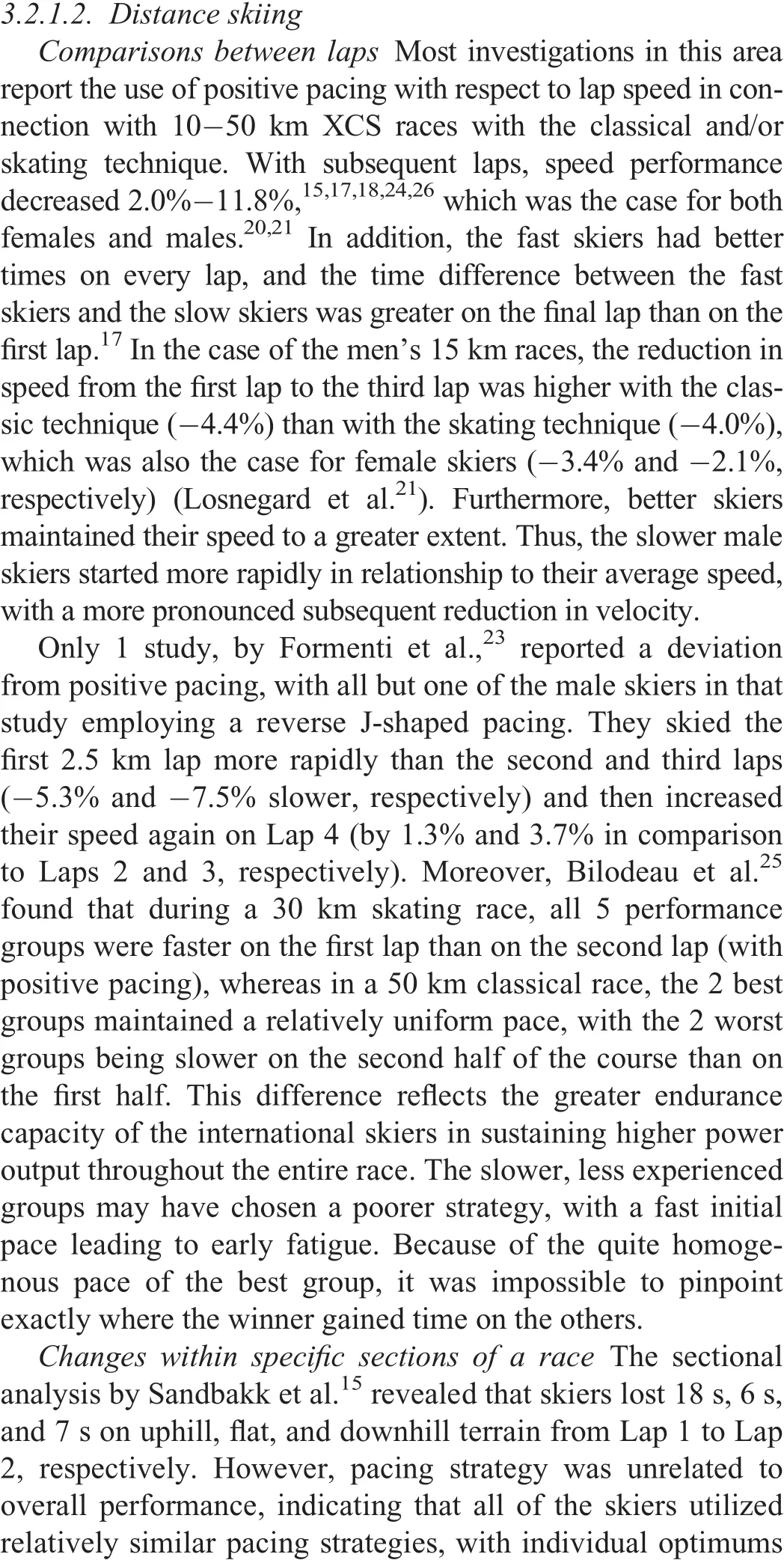
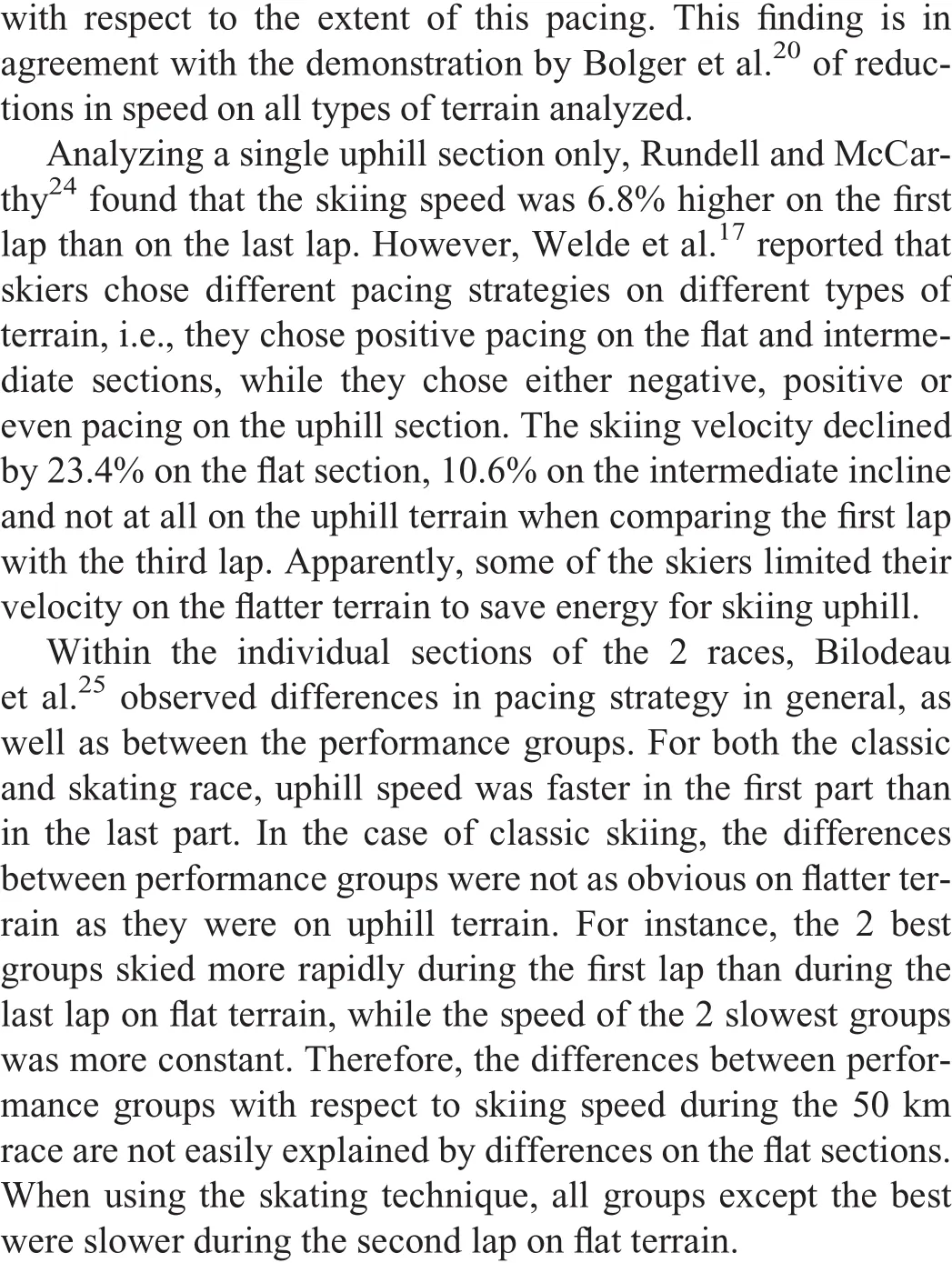

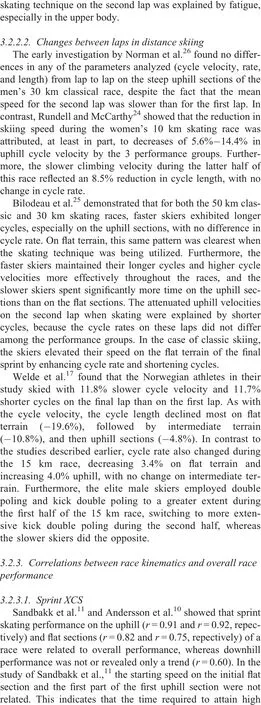
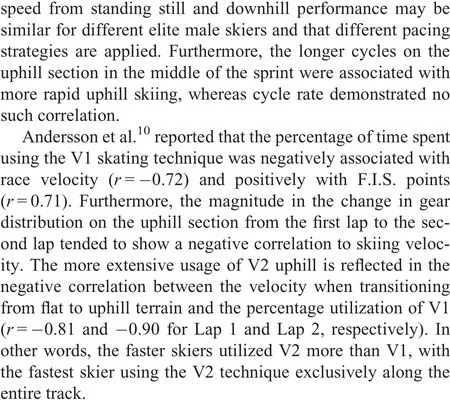
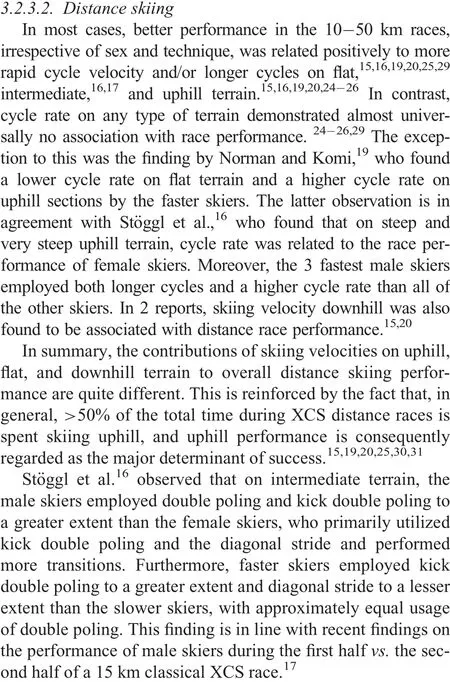


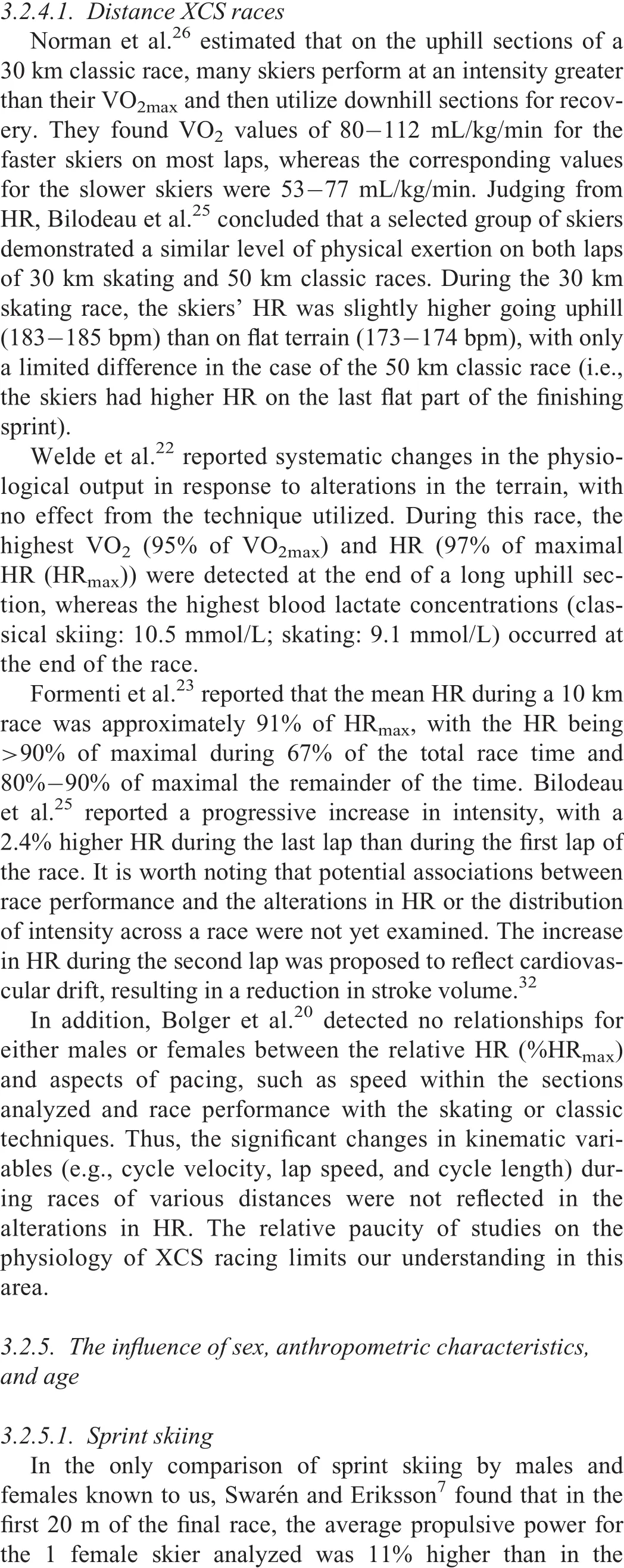
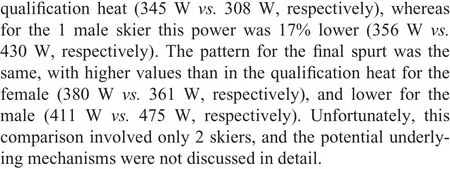

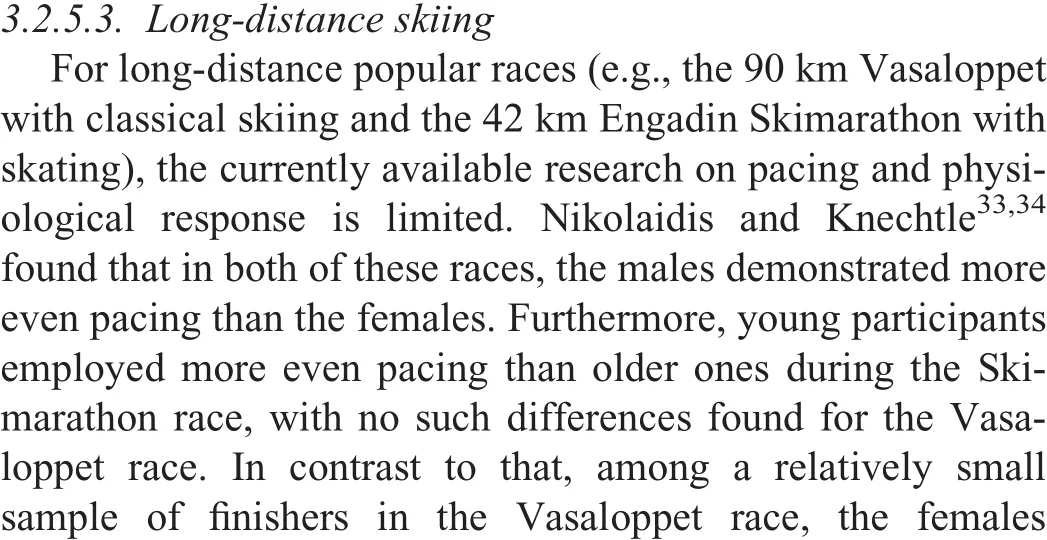
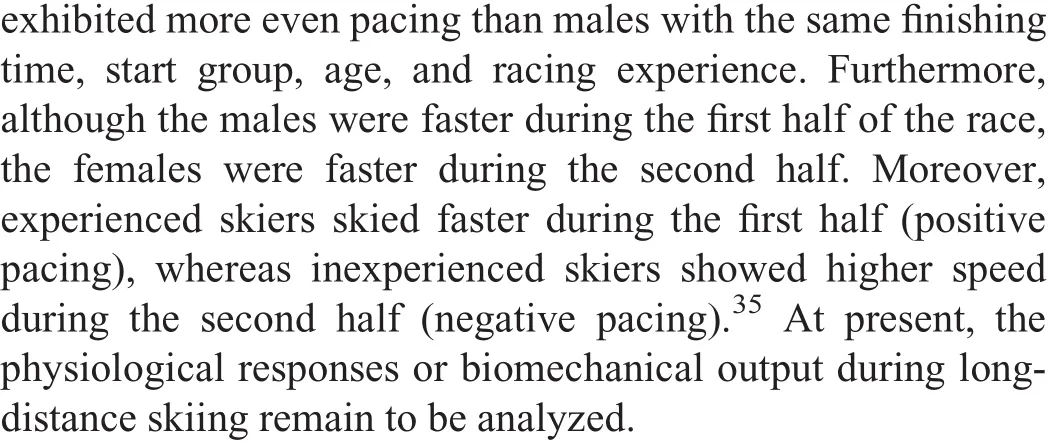
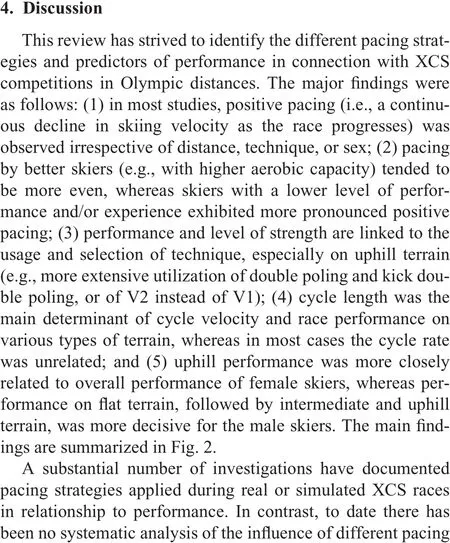
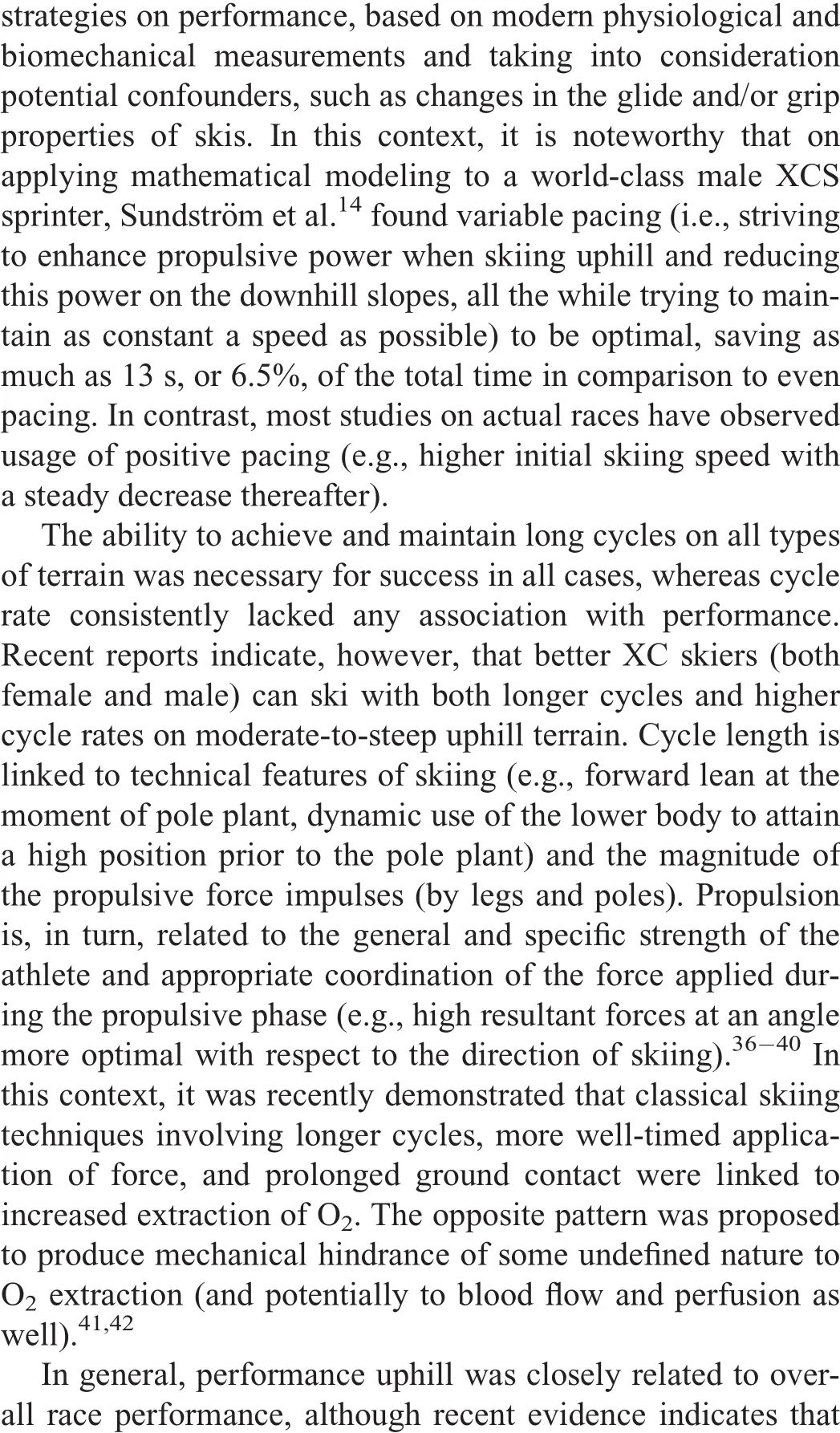
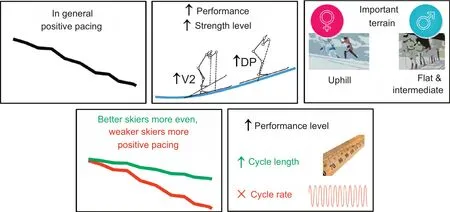
Fig.2.Summary of the main findings based upon the literature review on pacing in cross-country skiing.DP=double poling;V2=V2 skating technique.

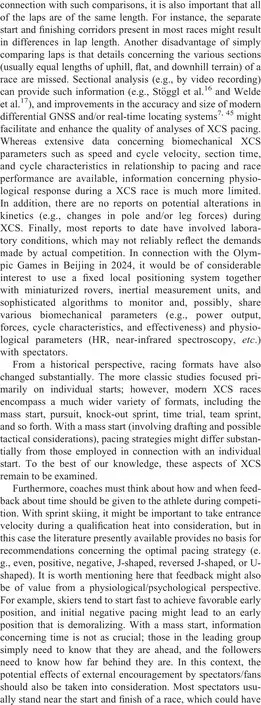

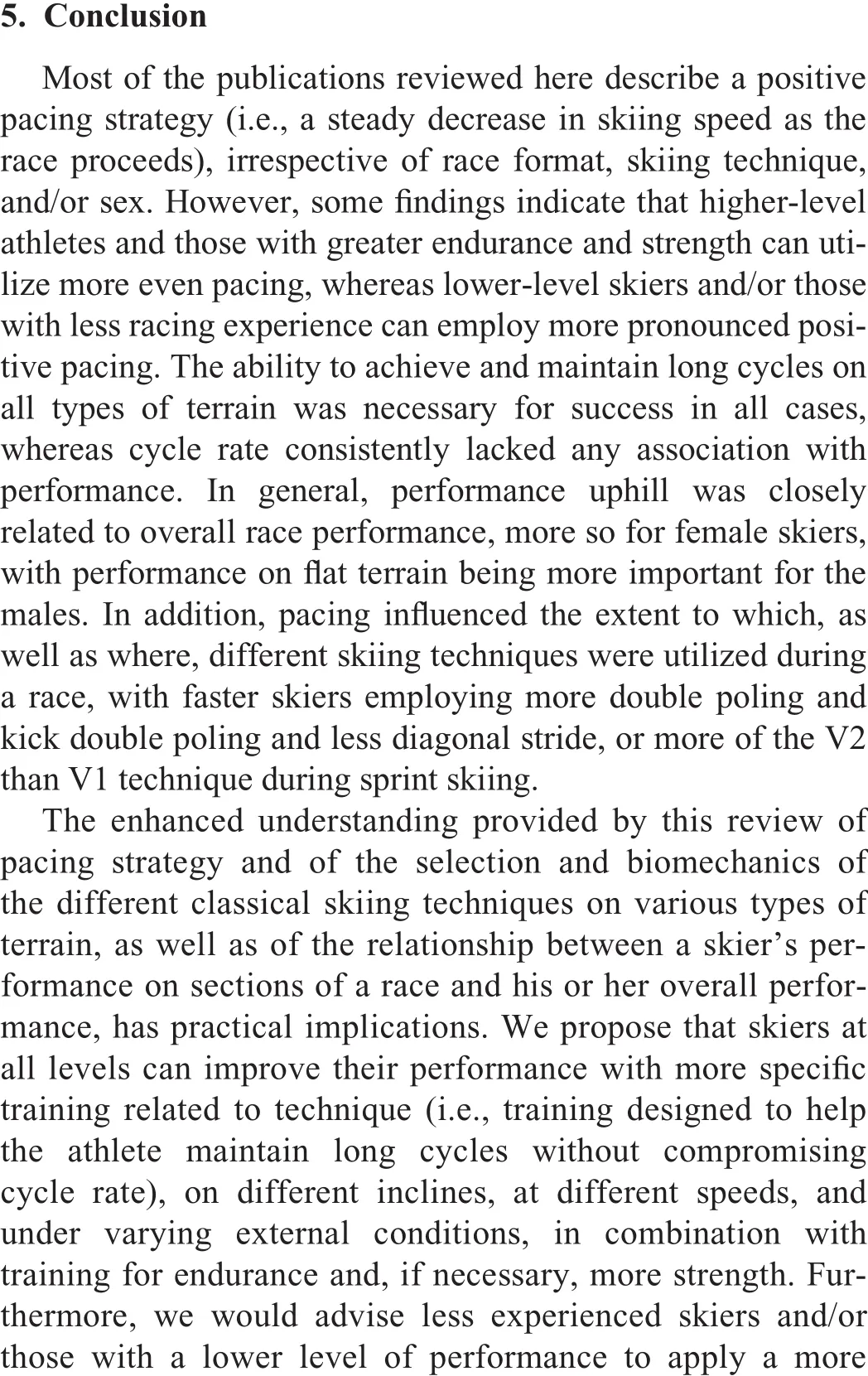
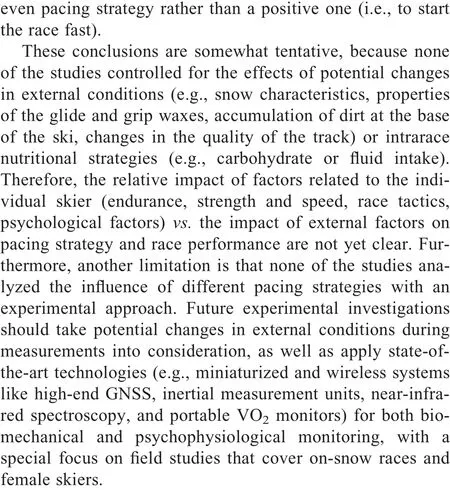
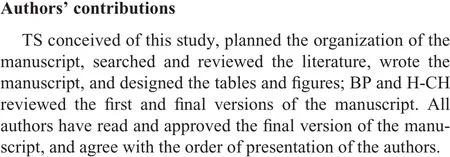

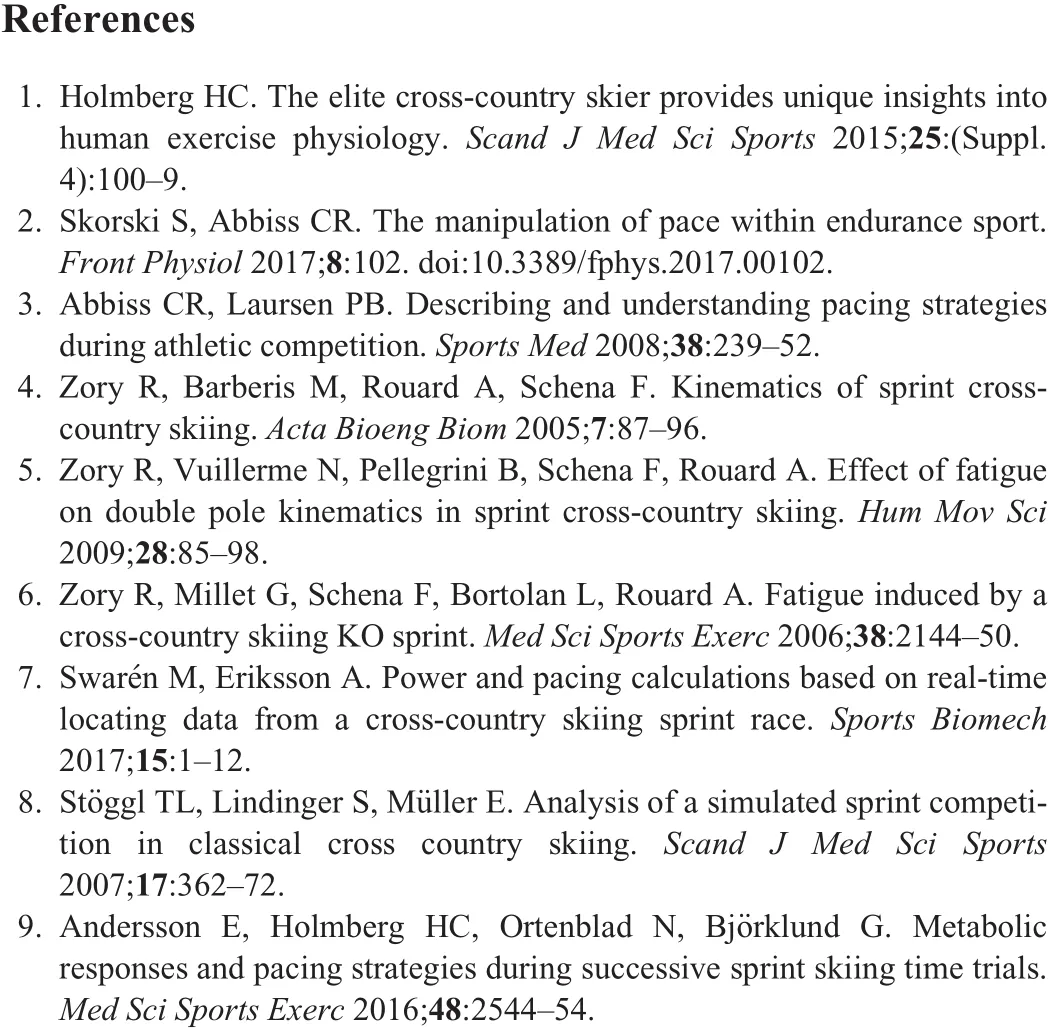
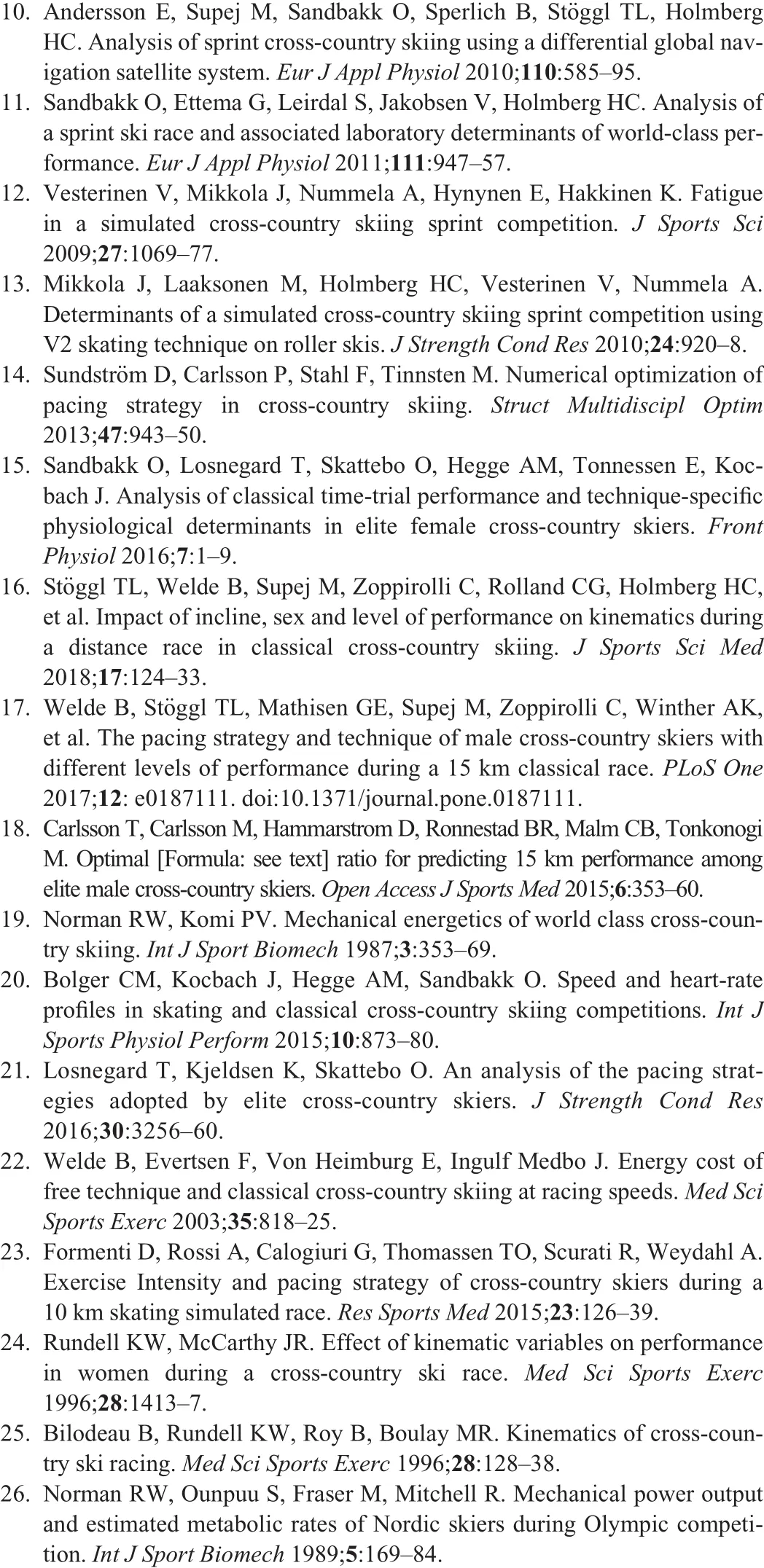
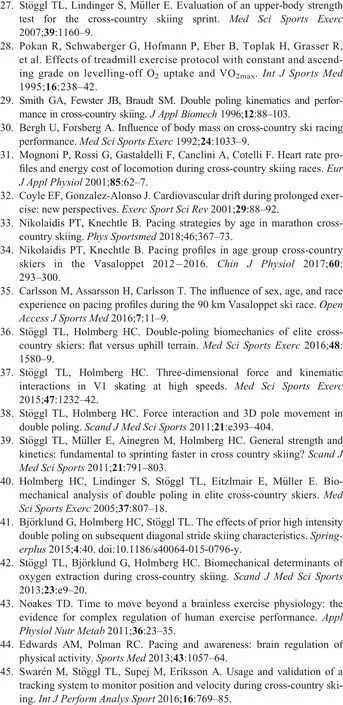
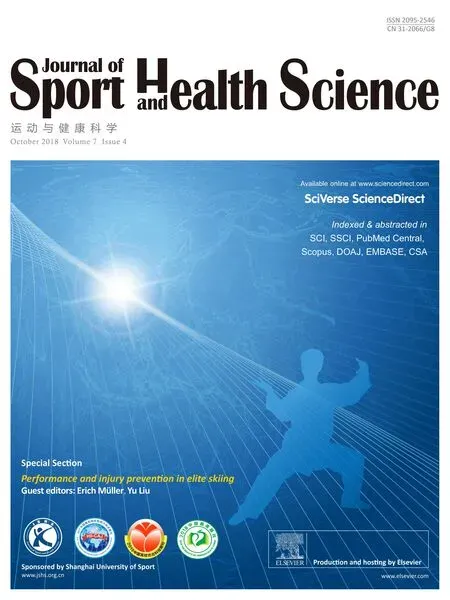 Journal of Sport and Health Science2018年4期
Journal of Sport and Health Science2018年4期
- Journal of Sport and Health Science的其它文章
- Sport participation and vigilance in children:In fluence of different sport expertise
- he in fluence of physiobiomechanical parameters,technical aspects of shooting,and psychophysiological factors on biathlon performance:A review
- Limb symmetry index in competitive alpine ski racers:Reference values and injury risk identification according to age-related performance levels
- A comparison of lower limb stiffness and mechanical muscle function in ACL-reconstructed,elite,and adolescent alpine ski racers/ski cross athletes
- he BRICS Council for Exercise and Sport Science(BRICSCESS)—A new era has dawned
- Battle of the sexes:Which is better for you,high-or low-intensity exercise?
